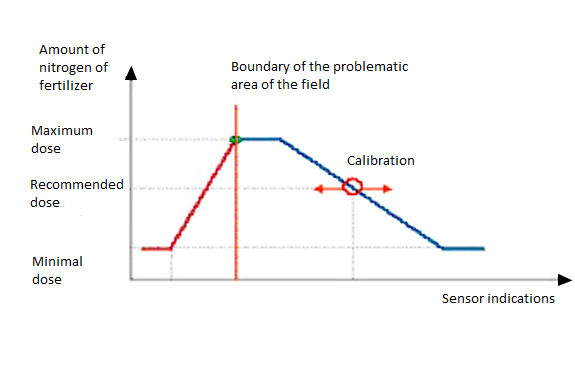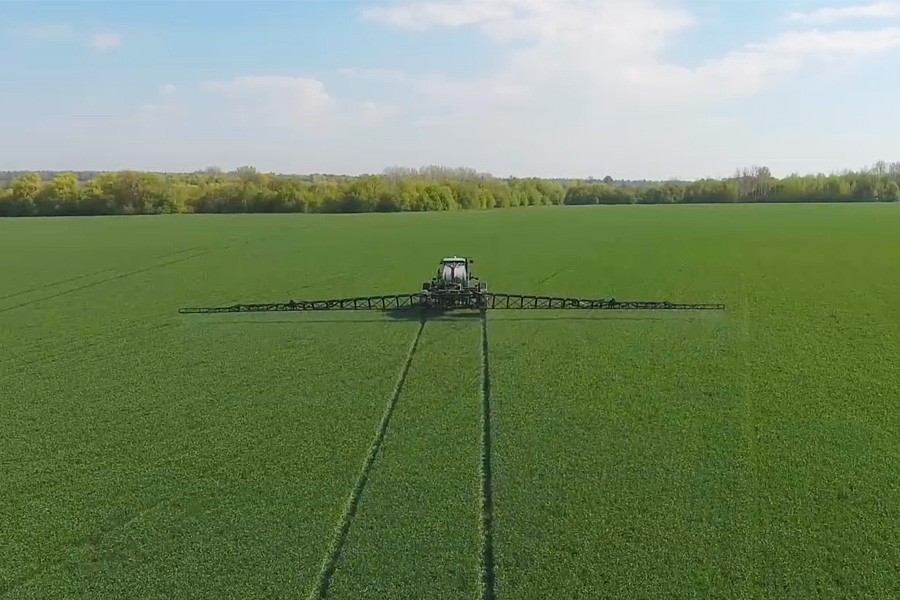The concept of coordinated (precise) agriculture implies the use of the fullest possible set of information for the development of agro-technical solutions, optimization them for soil, climatic and other conditions, and differentiated application of them for the basic technological operations. It is important to implement strictly defined and justified agrotechnical methods for the cultivation of specific crops. This article will consider the issue of feeding winter wheat with nitrogen fertilizers in accordance with the concept of precise agriculture. Unmanned aerial vehicles were used as the main source of spatial data. To learn more about other ways of UAV apllication in agriculture read the article.
Data collecting
With the help of unmanned aerial vehicles, three times from April to June, aerial photography was carried out in the visible and near infrared range, which resulted the creation of orthophotos and maps of vegetation indices. These data was used as a source of information on the current state of crops, and also as a basis for spatial division of the field into technological areas.

Fig. 1. Vegetation index map, obtained with the help of Geoscan 201 Agro UAV with selected areas №1, №2 (left) and a five-year synthesis image of vegetation index maps obtained from satellite images.
The first stage of aerial photography was carried out on April 13. The resulting map of vegetation index is shown in Fig. 1 on the left. To determine the zones with a persistently low and high index, a five-year synthesis image of vegetation maps, obtained from space images, was prepared. On these maps, two sites (No. 1 and No. 2) were selected for ground-based surveys, which included calculating the number of plants per area unit and measuring the nitrogen demands of plants with a use of an N-tester. The results of the measurements are illustrated in Fig. 2.

Fig. 2. Indications of N-tester at sites 1 (on the left, 624 plants/m2) and 2 (on the right, 670 plants/m2).
Building prescription files
With the help of GIS Sputnik Agro, raster maps of vegetation indices were classified and transformed to Shapefile format of vector maps,which represent by itself a set of polygons, for the attributes of which you can specify the dose of fertilization. The task map for the first seeding is shown in Fig. 3. Files of the shapefile format are downloaded directly to the Amatron 3 universal terminal (manufactured by Amazone). The fertilization was carried out by the Amazone ZG-B 8200 spreader.

Fig. 3. The task map for the first seeding. The values are given in physical tonnes of fertilizer per ha.
Determination of the dose of fertilization for each of the classes (homogeneous zones) is the task of the agronomist. In the experiment, a technique developed at the RSAU-MSAU was used, which consists in knowledge of the varietal specificics, field history, N-tester indications and the number of plants per area unit, the fertilizer dose can be reduced in strongly sparsed areas, i.e. where the number of plants is not enough to get a good harvest, and the situation can not be mended (in Figure 4, a vertical red line). As the number of plants increases, the maximum dose is applied to enhance tillering (on the fight of the red line). The effectiveness of this measure is illustrated in Fig. 5: in the sparsed area shown on the left, up to 3-5 productive stems per plant were observed during the summer. In areas with a high index, the fertilizer dose is reduced to decrease the probability of plants' stem tilting (the right side of the graph in Figure 4). On previous experiments it was found that often due to plants' stem tilting the maximum crop yield does not coincide with the maximum biomass, i.e. plants' potential is not used fully.

Fig. 4. Experimental algorithm for the nitrogen fertilization on winter wheat fields according to the recommendations of the N-tester device, depending on the crop biomass.

Fig. 5. The condition of crops in April (left) and June (right).
A similar situation was predicted in 2016 due to the large amount of precipitation during the vegetation period. The task map for the second feeding is shown in Fig. 6. In the greater part of the field, a differentiated fertilizaing is carried out, and a control plot with an average standard of the farming is formed. Fig. 6 also shows a fragment of the orthophoto (June 6 survey), which shows that the strategy of fertilizing led to plants' stem tilting (one of the reasons - excessive nitrogen nutrition). It should be noted that the average amount of fertilizer with a differentiated rate was 59.9 kg/ha. This was the purpose of experiment: the entire arsenal of accumulated information on the date of fertilizing was used to determine the dose of fertilizers, what fully corresponds to the concept of precise farming.


Fig. 6. Task map for the second fertilizing. The values are given in kg per ha. The enlarged fragment of the orthophoto (June 6 survey) illustrates plants' stem tilting in an area with a rate of fertilization of 150 kg / ha

Fig. 7. Wheat tilting on the control plot (fertiliziation rate is 150 kg/ha during the second feeding).
Crop yield data analysis



Fig. 8. Crop yield maps: general view, selected control plot ("control"), selected plot with differentiated fertilization ("site 1").
Consider the crop yield map shown in Fig. 8. Average crop yields values are given in Table. 1. On the crop yield map, the boundary of the control plot is clearly visible. The average crop yields values on the control plot are lower, which clearly illustrates the correctness of the chosen strategy for differentiated fertilization. The average crop yield at site 1 was 5800 kg / ha, on the control plot - 5637 kg / ha, the average field crop yield - 5676 kg / ha. In total, for two fertilizations for 30 hectares, it was deposited to 2733 kg less of ammonium nitrate, which averaged 91 kg/ha. The harvest increased by 345 kg/ha and saving of fertilizers made it possible to save an additional 3450 rubles per ha.
Table 1. Economic efficiency of differentiated nitrogen fertilization
You can read about ways of application of GIS Sputnik by following here.
Authors: Berezovskiy E.V. (RSAU-MSAU), Prokofiev N.A., Telyshev A.N ("Otkormochnoe" CJSC).
